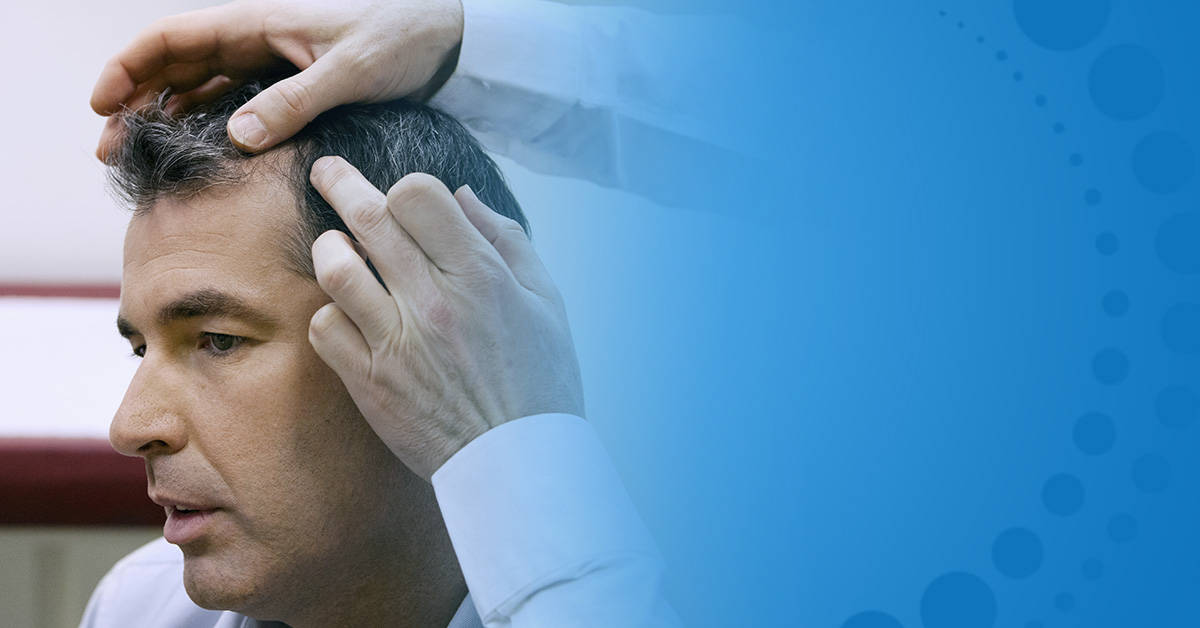History of Hair Loss

Humanity has been dealing with hair loss for thousands of years. That makes baldness cures one of the most sought-after treatments to improve one’s appearance.
Ancient Hair Loss Treatments
For much of recorded history, baldness was treated one of two ways – topically or through wigs and other methods intended hide the hair loss. A medical script from 1550 BCE called the Ebers Papyrus describes an ancient Egyptian baldness remedy that involved mixing fat from a crocodile, ibex, hippopotamus, and a snake, which was then applied to the head.
Another recipe from the same papyrus recommended boiling porcupine quills and then applying the result to the affected area for four days. Hippocrates advocated a Greek recipe that involved horseradish, opium, spices, pigeon droppings, and beetroot.
We know that Roman Julius Caesar suffered from hair loss because his contemporaries wrote about it, Caesar’s vanity, and his attempts to change or hide his increasing hair loss. Cleopatra reportedly recommended an Egyptian treatment that involved ground horse teeth and dead mice mixed with bear grease. Since that didn’t work, Caesar brought back an old Greek tradition of wearing a laurel leaf crown. The Greeks gave laurel crowns to those who won poetry and athletic competitions, like the Olympics, as well as for military victories.
In India, standing on your head was a yogic tradition believed to increase blood flow to the head… encouraging new hair growth, reversing hair loss, and curtailing gray hair. An 8th century Chinese remedy involved mashing animal testes and mixing them with herbs, rosemary, and safflower oil which was then applied that to areas going bald.
Historic Cover-ups
Wigs have similarly existed for a long time. In ancient Egyptian courts, wigs were very popular and often even worn over shaved heads. Millennia later, hair loss prompted King Louis XIII of France to begin wearing wigs – sparking a fashion trend that spread throughout Europe.
Whereas prior wig wearers had been discreet, King Louis selected large wigs with elaborate curls. Sometimes his wig was dark, mimicking his natural brown hair. Other times he wore a wig with white powder dusted over it. Soon both men and women all over Europe were wearing wigs. Women’s wigs became bigger and more elaborate, often decorated with flowers, jewels, and even model ships. Women’s wigs were also sometimes dusted with pastel hair powder, some of which was scented.
The wig fashion came to America with British colonists, though in more subdued styles than the ones favored by the French royal court. George Washington styled his natural hair to mimic a popular wig fashion and dusted his hair with white powder to further the look. After the Revolutionary War wigs fell out of favor because they were so associated with England and members of the British government.
Failed Hair Loss Treatments
During the 19th century, salesmen peddled all kinds of tonics and cures that claimed to cure all kinds of ailments, including baldness. Not only did they not work – some were dangerous because they included toxic ingredients.
As the development of machines grew and the Industrial Revolution took hold, people experimented with mechanical hair treatments. The Thermocap from the Allied Merke Institute used heat and light to stimulate hair follicles. Crosley Corporation created The Xervac, which promised to promote hair growth through suction.
Surgical Hair Treatments
The first documented surgery to fix hair loss occurred earlier than most expect – 1822. A group of medical school students in Germany and their teacher Professor Unger transplanted a piece of scalp from one area to another. Others copied the procedure with inconsistent, painful results.
While performing skin grafts in the 1930s to help burn victims, Japanese dermatologist Dr. Okuda noticed that smaller, round transplants created better results on the scalp and realized this could help hair loss patients. Dr. Okuda’s discovery was called the punch technique.
In 1943, Dr. Tamura – another Japanese dermatologist – realized that tinier grafts containing just one to three hair follicles generated even better results. Dr. Tamura’s discovery laid the groundwork for modern hair restoration surgery. However, World War II meant that the work of these doctors was unnoticed in the west for many years.
In 1952 the theory of donor dominance was developed by Dr. Orentreich. He observed that donor hair follicles taken from the back and sides of the head were more resilient and far less likely to succumb to male pattern baldness after being transplanted elsewhere on the scalp.
Even though Dr. Orentreich’s theory was correct… his technique was poor. His surgical technique was so crude that people referred to the results as “hair plugs” because the appearance was so obvious. As a result, surgical hair procedures had a bad reputation for some time.
To improve appearance results, Follicle Unit Transplantation (FUT) was developed. In this method, a strip is transplanted from one part of the scalp to another. While it did look better than the hair plug method, patients were left with a noticeable scar on the back of the head – requiring longer hair styles to hide it.
The next step forward was the development of the Follicle Unit Excision (FUE) surgical procedure. With this method only one to three hair follicles are transplanted… avoiding the scar-line and creating a more natural appearance.
At Austin Hair Restoration Clinic, we use the ARTAS® Robotic System. This allows us to perform incredibly precise transplants involving one follicle at a time to create the most natural-looking results and minimal scarring.
Talk to Austin Hair Restoration Clinic About Your Hair Loss
Austin Hair Restoration Clinic offers both surgical and non-surgical remedies and procedures to restore your hairline, including the use of our state-of-the-art ARTAS® Robotic Hair Transplant System. This hair restoration procedure is minimally invasive and will get you back to your day-to-day life quickly. Contact us today to learn more and schedule a hair and scalp analysis.
Dr. Sanjeev Dubey is an experienced hair restoration and emergency medicine physician in Austin, Texas. He holds a medical degree from the University of Texas Medical Branch (UTMB) and has been practicing medicine for over two decades. His affiliations include Seton Medical Center Austin, Seton Northwest, and various local hospitals.





